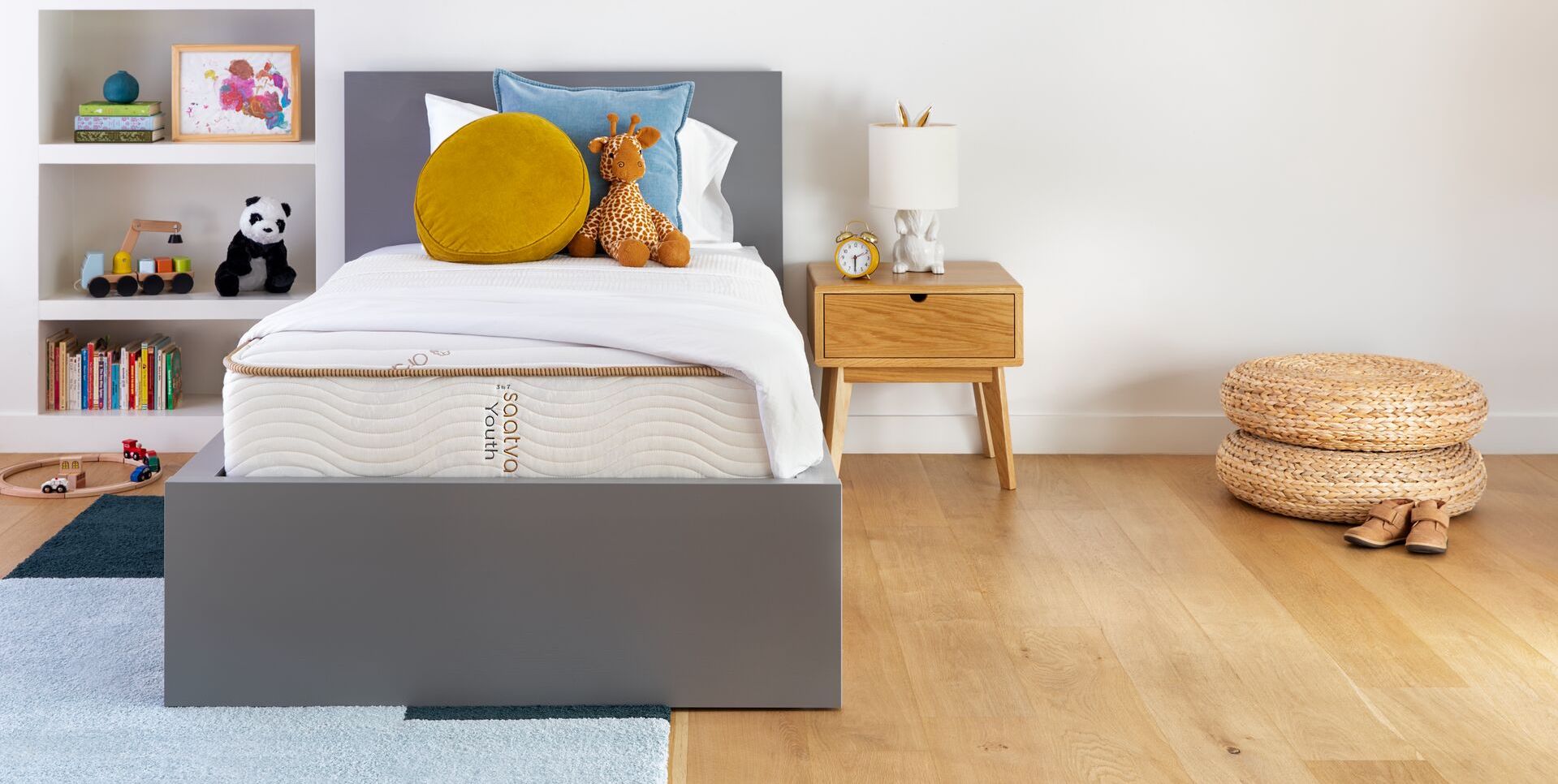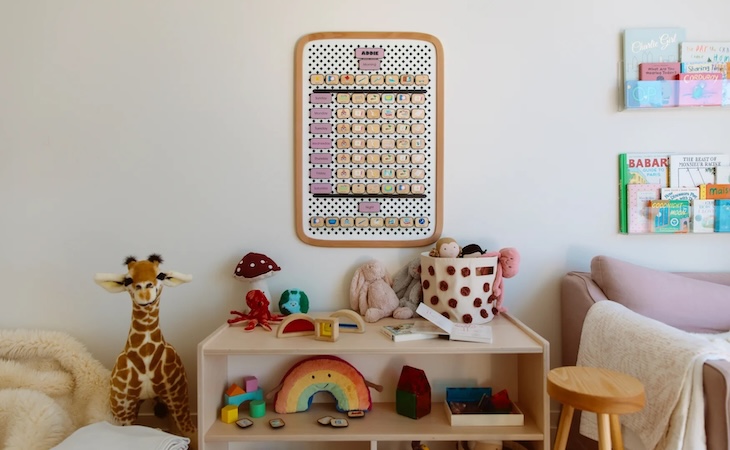Bedtime. It can be both a sweet and special time with your children (what’s cuter than little eyelids closing as kids drift off to sleep?) and a seriously stressful time as a parent, often fraught with procrastination, requests, and exhaustion on all fronts.
Bedtime can become particularly tricky for parents navigating not just bedtime but…bedtimes—and the sleep needs of multiple children.
Mastering the art of multiple bedtimes is often a delicate dance, forever changing as your children grow older. One constant: Children of all ages and adults alike thrive on routine.
The good news: Creating a routine that works for your family (and being flexible with it) is possible, even amidst the chaos, and doing so can help everyone (yourself included) get the right amount of rest.
So, where do you start? These six reminders—practical takeaways for any caregiver juggling more than one bedtime—can help.
1. Know how much sleep (you and) your kids need
What the numbers say: Experts generally recommend that adults sleep between seven and nine hours a night. (Research finds that grownups who log less than seven hours a night of sleep may face more health issues than those who sleep more.)
Children’s sleep needs depend largely on how old a child is. “As a rule of thumb, the younger the child, the longer the duration of sleep that is needed for healthy functioning,” explains Ashanti Woods, MD, a pediatrician at Mercy Medical Center in Baltimore.
The American Academy of Sleep Medicine outlines sleep requirements per day for children of various ages:
- Infants (ages 4 to 12 months): 12 to 16 hours of sleep (in naps and overnight sleep)
- 1- to 2-year-olds: 11 to 14 hours of sleep (in naps and overnight sleep)
- 3- to 5-year-olds: 10 to 13 hours of sleep (including naps)
- 6- to 12-year-olds: 9 to 12 hours of sleep
- Teenagers: 8 to 10 hours of sleep
Now, it’s important to note that these figures are presented in ranges for a reason. Just as not every grownup needs eight hours, not every infant needs 16. You know yourself and your sleep needs best and you know your children and their sleep needs too.
Knowing how much sleep everyone in the house needs can help you land on a routine that works for everyone—and for caregivers, doing so can help you figure out where you might need the most support. Which brings us to…
2. Know the ingredients of a healthy sleep routine
Knowing that children and adults thrive off of routines, Woods notes that there are several helpful “B’s” that come to mind when it comes to sleep. Starting from infancy, those B’s include:
- Being Bathed (a bath or a shower)
- Brushing teeth
- Body massage (moisturizer after bath)
- Reading a Book
- Breast/Bottle (for babies)
- Asleep in a Bassinet (for babies)
“As the child gets a little older, sleep routines are often associated with behavior,” Woods explains. “In other words, kids typically do what they are used to doing—which is why parents must set some boundaries when it comes to preparing for bed and a healthy sleep routine.”
3. Set up the ideal afternoon/evening environment for sleep
“Healthy sleep habits include no sugary beverages or snacks or caffeine two hours before bedtime, establishing a screen time/electronics curfew at least one to two hours before bedtime, and avoiding anything that could lead to scary thoughts or nightmares (even the news),” says Woods.
You might also consider incorporating certain sleep-promoting activities through the afternoon and evening, he says. This may include outdoor time in the afternoon or writing exercises for older children (like writing in a journal).
4. Find a bedtime order that works
After establishing a specific bedtime based on the amount of time needed for healthy functioning, Woods generally suggests that families with children of various ages start bedtime with the child who requires the most sleep first: the youngest.
If you have a baby and two toddlers, for example, you may put the baby to bed first around 7 pm to ensure they get the 12 hours of sleep they need after some naps throughout the day.
“This may mean separating this child from the other children to allow him or her an opportunity to concentrate on falling asleep—instead of paying attention to their surroundings,” he says. “Sometimes the youngest can be the hardest to put to sleep and sometimes the youngest can be the easiest.”
Doing bedtime at the same time for children of similar ages might work too. Ultimately, finding a bedtime order/plan will require some trial and error and depend on factors including children’s ages, sleeping spaces (do children share rooms?), and more.
Fortunately, these individual factors can also be worked into a routine. For example, if your kids share a room and your baby goes to bed earlier, then maybe you choose to read a book with your older child and complete their bedtime routine away from the bedroom they sleep in while the baby is sleeping so that by the time you go into the room, it’s time for bed.
Have a baby in the family with older children? Maybe older siblings can be involved in the baby’s bedtime routine in some ways.
As for the ideal bedtime for your child, that will depend on more than just sleep needs, of course—and include factors such as when children wake up from their last nap (if they’re still napping) to ensure they’re tired enough for bed, family culture (do you like to go to bed early? Do you eat dinner late?), work schedules (do you get out of work late?), support (are you partnered? Do you have help in the evenings?), and more.
Remember: What works for every family will be different and every night will look different; some nights will be hard while others will feel easier. Knowing your children, recognizing when things aren’t working (and when things are working), and being open to change are all key.
After all, routines are important and being flexible with your routine, knowing that things are always changing, will help you throughout the journey of sleep as your kids grow.
5. Beware of OTC sleep aids
Use of the sleep hormone melatonin—which regulates the body’s sleep/wake cycle—is on the rise in kids. A new study in JAMA Pediatrics recently found that 19% of adolescents, 18% of kids ages 5 to 9, and 6% of kids ages 1 to 4 were given the supplement, usually in the form of a gummy, to sleep.
“Very rarely will there be the need for sleep aids like melatonin or other medicines for children who have good sleep hygiene routines,” says Woods.
It’s worth remembering too that supplements are not fully regulated by the Food and Drug Administration (FDA) for safety or efficacy in the US. (Learn more about melatonin for children.)
6. Cozy up with your pediatrician—and know support is always available
If you feel like you’ve tried all of the sleep hygiene tips and are still struggling with your child’s sleep? Talk to your pediatrician, Woods says. Sleep is paramount not just for children’s developing brains but for adult brains and emotional and physical health too.
Together with your children’s physician, you can work through any sleep problems that are impacting your family and get the support you need.
FAQs
Should siblings have different bedtimes?
Siblings may require different bedtimes depending on their age. For example, younger children may need to have an earlier bedtime than older children. If siblings are close in age, then you may be able to do bedtime together.
How do you stagger kids’ bedtimes?
Start with the child who needs the most sleep: the youngest. Put them to sleep first at a time that will ensure they get the recommended amount of sleep for their age. You may need to separate the youngest child from the other children to allow them to concentrate on falling asleep. What works best for every family will be different.
Check out more helpful content for parents and families from Cassie Shortsleeve:
- 6 Common Questions About Room Sharing for Kids, Answered
- 7 Tips to Transition Your Child From Crib to Bed
- 6 Travel Sleep Tips All Parents of Babies and Toddlers Need
- 6 Nighttime Potty Training Hacks From a Pediatrician
- A Quick Guide to Safe Baby Sleep—Plus 3 Top Product Picks From a Pediatrician






